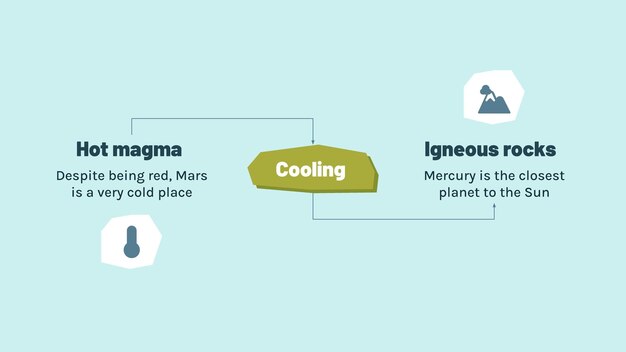Master Cold Emailing: Get US Prospects to Open, Read & Respond (10% Response)

Master the art of cold emailing to achieve a 10% response rate from US prospects by crafting compelling emails that grab attention, deliver value, and prompt action.
Want to **master the art of cold emailing: craft compelling emails that get opened, read, and responded to by US prospects (with a 10% response rate)?** In the fiercely competitive world of sales, a well-crafted cold email can be your golden ticket to connecting with potential clients, building relationships, and driving business growth. Let’s dive in and transform your cold emails from ignored messages into powerful conversion tools.
Understanding the Power of Cold Emailing
Cold emailing, when done right, is a powerful tool for reaching out to potential clients. It’s about making a connection, showcasing value, and initiating a conversation, all within the confines of a concise and engaging email.
Why Cold Emailing is Still Relevant
Despite the rise of social media and other digital marketing channels, cold emailing remains a relevant and effective strategy. It allows you to directly target specific prospects, personalize your message, and track your results.
- Direct Reach: Connect directly with decision-makers.
- Personalization: Tailor your message to resonate with their needs.
- Measurable Results: Track open rates, click-through rates, and conversions.
The Importance of a Targeted Approach
A generic, one-size-fits-all email is destined for the trash bin. The key to success lies in a targeted approach, where you carefully select your prospects and craft a message that speaks directly to their pain points and aspirations.

By understanding the power of cold emailing and adopting a targeted approach, you can significantly increase your chances of success and build valuable relationships with US prospects.
Crafting Compelling Subject Lines
Your subject line is the gatekeeper of your email. It’s the first (and sometimes only) impression you make on your recipient. A poorly written subject line can doom your email to the spam folder or, worse, the dreaded delete button.
Personalization is Key
Personalized subject lines have a higher open rate than generic ones. Use the recipient’s name, company name, or mention a mutual connection to grab their attention.
Creating Urgency and Intrigue
A sense of urgency or intrigue can also entice recipients to open your email. Use words like “urgent,” “important,” or “exclusive” to create a sense of anticipation.
- Keep it Short: Aim for under 50 characters.
- Be Specific: Clearly state the value proposition.
- Avoid Spam Trigger Words: Stay away from words like “free,” “guarantee,” or “discount.”
By crafting compelling subject lines that are personalized, intriguing, and concise, you can significantly improve your email open rates and get your message in front of more US prospects.
Personalizing Your Email Content
In today’s digital age, personalization is no longer a luxury; it’s a necessity. Prospects are bombarded with generic marketing messages every day, so you need to stand out from the crowd by crafting personalized emails that demonstrate your understanding of their needs and interests.
Researching Your Prospects
Before you start writing, take the time to research your prospects. Use LinkedIn, company websites, and other online resources to learn about their industry, their company, their role, and their pain points.
Tailoring Your Message
Use the information you gathered to tailor your message to each recipient. Mention specific challenges they’re facing, highlight relevant solutions you offer, and demonstrate how you can help them achieve their goals.
- Use Their Name: Greet them by name in the email body.
- Reference Their Work: Mention specific projects or accomplishments.
- Show Empathy: Acknowledge their challenges and offer solutions.
By personalizing your email content, you can build rapport with your prospects, demonstrate your expertise, and increase your chances of getting a response.
Delivering Value in Every Email
Your cold email shouldn’t just be about what you want; it should be about what you can offer your prospect. Focus on delivering value in every email, whether it’s sharing valuable insights, offering helpful resources, or providing exclusive opportunities.
Sharing Relevant Insights
Share industry trends, market data, or best practices that are relevant to your prospect’s business. Demonstrate your expertise and position yourself as a trusted advisor.
Offering Helpful Resources
Provide links to useful articles, white papers, or case studies that can help your prospect solve their challenges. Position yourself as a valuable resource and build goodwill.
Providing value will grab attention
Showcasing Your Unique Selling Proposition
Clearly articulate what sets you apart from the competition. Highlight your unique strengths, expertise, and solutions that can benefit your prospect.

By delivering value in every email, you can capture your prospect’s attention, establish credibility, and increase your chances of converting them into customers.
Crafting a Clear Call to Action
Your email should have a clear and concise call to action (CTA) that tells your prospect what you want them to do next. Whether it’s scheduling a call, visiting your website, or downloading a resource, make it easy for them to take the next step.
Specificity Is Key
Avoid vague or ambiguous CTAs. Be specific and tell your prospect exactly what you want them to do. For example, instead of saying “Contact us,” say “Schedule a 15-minute call to discuss your needs.”
Make It Easy
Make it easy for your prospect to take action by including a clear and prominent button or link in your email. Ensure that your CTA is visually appealing and easy to click on.
- Use Action Verbs: Start your CTA with action verbs like “Schedule,” “Download,” or “Learn.”
- Create Urgency: Add a sense of urgency by including a deadline or limited-time offer.
- Test Different CTAs: Experiment with different CTAs to see which ones perform best.
By crafting a clear and concise call to action, you can guide your prospects towards the desired outcome and increase your conversion rates.
Following Up Strategically
Following up is crucial for increasing your response rate. Most people don’t respond to the first email, so it’s important to send a series of follow-up emails to stay top of mind and reiterate your value proposition.
Timing Is Everything
Wait a few days before sending your first follow-up email. Don’t bombard your prospects with too many emails, as this can be perceived as spammy or annoying.
Vary Your Messaging
Don’t just resend the same email over and over again. Vary your messaging and offer new insights, resources, or opportunities in each follow-up email.
By following up strategically, you can increase your chances of getting a response and build valuable relationships with US prospects.
Analyzing and Optimizing Your Cold Email Campaigns
The key to long-term success with cold emailing lies in continuous analysis and optimization. Track your key metrics, identify areas for improvement, and make adjustments to your campaigns to maximize your results.
Tracking Key Metrics
Monitor your open rates, click-through rates, and conversion rates to see how your emails are performing. Use this data to identify areas where you can improve your subject lines, email content, and CTAs.
A/B Testing
Experiment with different subject lines, email content, and CTAs to see which ones resonate best with your audience. Use A/B testing to compare different variations and identify the winning combinations.
By analyzing and optimizing your cold email campaigns, you can continuously improve your results and achieve a 10% response rate from US prospects.
| Key Point | Brief Description |
|---|---|
| 🎯 Targeted Subject Lines | Craft subject lines that grab attention and entice opens.. |
| 🤝 Personalization | Tailor your message to resonate with each prospect’s needs. |
| 🎁 Value Proposition | Offer valuable insights or resources in your emails. |
| 📞 Clear Call to Action | Guide prospects with a clear and action-oriented next step. |
FAQ
▼
Keep your cold emails concise, ideally under 200 words. Focus on delivering your message quickly and efficiently to respect the recipient’s time.
▼
The subject line is crucial. It’s the first thing recipients see and determines whether they open your email. Make it compelling, personalized, and relevant.
▼
Include a clear, direct call to action that tells the recipient what you want them to do, such as scheduling a call or visiting a website. Make it easy to act.
▼
Send about 2-3 follow-up emails. Space them a few days apart and offer new value in each to avoid being seen as spammy or intrusive.
▼
Track open rates, click-through rates, and conversion rates to gauge the effectiveness of your emails. Analyze this data to improve your campaigns.
Conclusion
Mastering the art of cold emailing requires a blend of strategy, creativity, and persistence. By crafting compelling subject lines, personalizing your email content, delivering value in every message, and following up strategically, you can significantly increase your chances of success and achieve a 10% response rate from US prospects, ultimately driving business growth.





